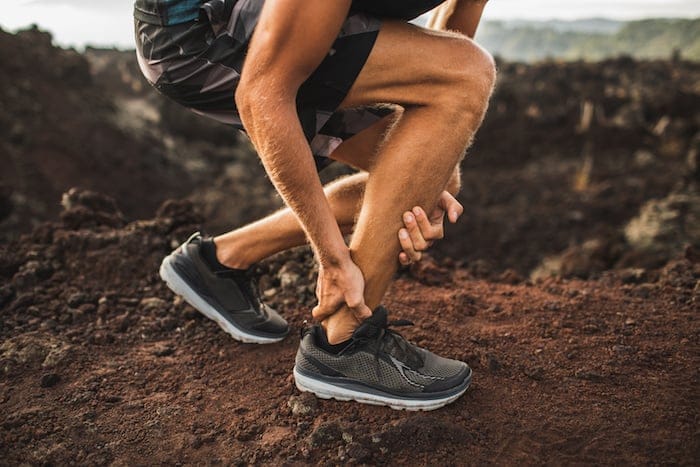For most people, getting older brings about unpleasant body aches. Often, these can be attributed to the slow deterioration of muscles and organs. With this, a lot of adults go through the hustle and bustle of life while enduring mild discomfort from their joints or tendons.
If you’re already feeling twinges of pain from your wrist, knees, or elbows, you may already be experiencing symptoms of tendonitis. This tissue problem is characterized by pain, whether dull or sharp, coming from the area between the muscle and bone.
You may be suffering from tendonitis unwittingly. With this, you must seek the help of a doctor to avoid exacerbating the symptoms and ending up with complications. Fortunately, you don’t have to go to a hospital, especially if you aren’t sure about the exact status of your health condition. You can visit specialized centers, like Teton Foot & Ankle, and get their professional advice on what steps you should take.
Meanwhile, you should also be aware of the proper ways to manage tendonitis symptoms, which include the following:
1. Pain
Depending on your pain tolerance, you might be able to withstand the dull throbbing from the area where you may have tendonitis. A lot of people grit their teeth and continue working.
This is particularly true for athletes who persist practicing even with the ache in their joints, especially if they’re preparing for a tournament. Most of the time, people only go to the doctor when the pain escalates into a sharp and piercing one that’s no longer tolerable.
However, ignoring the pain in hopes that it’ll go away on its own can lead to further problems if you have tendonitis. What once was merely a microscopic tear can become a massive wound on the tendon and leave you unable to use the affected muscles.
If you’re already suffering from pain, these are the steps you ought to take to alleviate this symptom at home:
- Rest – Abrupt movement can lead to the inflammation and tearing of your tendons. When you experience pain after landing improperly after a jump or stopping your movement brusquely, you should give your body time to heal itself. You can still go about your chores, but make sure that you don’t put strain onto the injured tendon.
- Ice – Applying ice to the affected area can help reduce pain, as well as muscle spasm and swelling. Hold an ice pack directly to the skin for up to 20 minutes. Let it rest for a few minutes and resume while keeping in mind the limit. Otherwise, your skin might get ice burn. You can do this several times a day.
- Compression – Wrapping the area around the injured tendon can help you ensure that you won’t be able to apply pressure onto it. For knee, wrist, and elbow problems, you can place a binder around the limbs, while compressive elastic bandages work best for shoulder injuries.
- Elevation – Elevation can decrease the swelling in the affected area. For instance, if you have knee tendonitis, you can raise the injured leg above heart level. This way, you can control the blood flow a little bit.
For sharp and piercing pain, however, you might want to consult with your orthopedist or podiatrist about how to reduce the ache. They may prescribe treatments, such as:
- Pain Relievers – Aspirin, naproxen sodium, or ibuprofen are the usual drugs that can assuage the discomfort you feel when you have tendonitis. Pain relievers can also come in the form of topical creams.
- Corticosteroids – When you visit your doctor for tendonitis-related pain concerns, they may inject a corticosteroid medication around the affected area. However, this method isn’t recommended for chronic problems since repeated injections can weaken the tendon and heighten the risk of rupturing it.
- Platelet-Rich Plasma – This type of treatment entails taking a sample of your blood and having it go through a centrifuge to separate the platelets from the other components. The mixture is, then, injected into the injured tendon.
- Surgery – The doctor may recommend surgery for severe cases. There’s dry needling, which entails making small holes in the tendon to stimulate healing factors. Another option is an ultrasonic treatment to remove the scar tissue. Lastly, a major surgical operation might be needed for a ruptured tendon that has torn away from the bone.

2. Tenderness
Sometimes, you might not feel dull pain, but, instead, experience mild soreness in the affected area. This can also be a symptom of tendonitis, especially if it’s in the joints.
You should take note of the places where you sense this type of ache and be mindful of the frequency of the attacks. You may notice that the tenderness comes after exercising or improper movement.
3. Tightness
Another sensation that you may experience that doesn’t feel like pain or tenderness is tightness. You may have difficulty in movement, especially since the issue affects the joints.
Tendonitis stems from either overload or overuse of the muscles. You must be aware of the areas that are commonly afflicted with the condition, such as:
- Shoulders – Also known as pitcher’s shoulder, this type of tendonitis involves the supraspinatus muscle that’s attached to the upper arm bone at the shoulder joint.
- Elbows – Elbow tendonitis affects tennis players or golfers since they use this limb more often and with repetitive movements. Different muscles are involved in pain on the inner or outer side of the elbow.
- Knees – The most common form of knee tendonitis is called the jumper’s knee. It affects the patellar or quadriceps tendon, which are both located at the kneecap. Basketball players and runners typically suffer from this affliction.
- Wrists – If you experience tightness or pain in the back of your wrist at the base part of the thumb, you might be experiencing De Quervain’s disease, which is the most common form of wrist tendonitis. It usually affects badminton player and factory or production line workers.
- Achilles Heels – Athletes who run or jump repeatedly may suffer from Achilles tendonitis. The tissue is attached to the heel bone at the back portion of the foot. This can also be related to other inflammatory illnesses, such as gout and reactive arthritis.
4. Swelling
Inflammation is often your body’s way of signaling that something is wrong with the muscles or tendons, which is why your foot swells after you sprain it. Swelling is a symptom of tendonitis, so check the affected area and relieve the ache with an ice pack and compression.
One of the top natural remedies for tendonitis that can help with inflammation is turmeric. The spice, which is an integral ingredient of curry, has potent anti-inflammatory and antioxidant properties. It’s also relatively easy to add to your favorite juice or smoothie recipe. You can drink it in tea form as well.
5. Grating
If you experience a grating or crackling feeling when you move the affected area, it’s highly likely that the tendon there has a microscopic tear. This sensation is one of the early signs of tendonitis.
You can alleviate this symptom by following the rest, ice, compression, and elevation (RICE) steps mentioned above. Give your body time to heal by refraining from doing activities that put a strain onto the injured area. Then, ease the pain you feel by applying ice packs and wrapping the limb with compressive support.
6. Lump
Lastly, lumps may form on or around the affected tendons. These usually occur if the patient keeps on ignoring the symptoms and continues to put pressure on their shoulders, wrists, elbows, knees, or heels.
You will need to talk with your doctor about the appropriate treatment methods that you can follow. This can range from taking pain relievers orally or topically to undergoing major surgical procedures.
How To Avoid Tendonitis
Tendonitis, as with other health disorders, is not a pleasant condition. You should remember that your body is composed of various systems, and issues with one area can have negative repercussions on your entire well-being. That’s why you should make sure to take care of your body, such as doing all that you can to avoid abusing your muscles and tendons.
Here are the ways to take care of your ligaments:
1. Warm Up And Cool Down
Tendonitis is caused by overuse or overload. This means that you run the risk of developing this tissue problem if you keep on doing the same movements without easing your body into the task.
That’s why you must always make time for warming up and cooling down your muscles before and after a workout. These aren’t just some activities that trainers include to prolong your agony; there’s actual scientific benefits to them.
When you stretch before a rigorous exercise session, you’re sending signals to your brain to brace your body for a physically stimulating task. Cooling down, on the other hand, gives your muscles time to recover from an intense workout by not stopping the momentum abruptly.
Think of your body as an engine that needs time to rev before it can start going, which is what you’re doing when you warm up. On that note, cooling down would be the equivalent of waiting for your car to stop revving, especially for automatic transmissions, before you turn it off in the garage.
2. Rest From Repetitive Exercises
Again, tendonitis comes from repetitive movement without allowing your body to recuperate from the microscopic tears. Athletes are guilty of this abuse, as well as beginners who go through high-intensity interval training (HIIT).
HIIT is a program that’s characterized by periods of intense aerobic exercises coupled with short recovery periods. With this type of training, you’re asked to do as many reps of a movement as you can with only a short amount of time to catch your breath before the next set of activities.
A lot of people who do HIIT on their own tend to push their bodies into exhaustion rather than gradually increasing the intensity or duration. When performed improperly, HIIT exercises can lead to tendonitis.
One way to prevent developing this tissue condition is to make sure that you give your body enough time to rest. For instance, if you started training on Monday, it might be wise to skip Tuesday or, at the very least, do a low-impact workout regimen, such as yoga or Pilates, so that you don’t add strain to your muscles. Then, you can resume with the HIIT workout on Wednesday. Afterward, you have the option to gradually continue the regimen once you’re sure that your body has gotten used to it.
3. Check Your Form
Aside from being conscious about the intensity and duration of your training, you should also make sure to utilize the right muscles for certain exercise activities. You risk pulling a muscle if you don’t know where to gather strength from and where you should exert it.
With this in mind, it would be ideal to work with a professional trainer who can guide you on the principles behind exercise routines. They have the knowledge and experience to teach you how to lift or land after a jump properly. They can also spot potential problems when you perform the actions incorrectly.
4. Wear Proper Exercise Gear
Moreover, you should also invest in appropriate exercise gear. Your shoes must be well-cushioned and your clothes, more than for that outfit-of-the-day selfie, designed for ease of movement. Consider using support garments as well.
5. Practice Proper Office Ergonomics
The gym and sports center aren’t the only places where you can get tendonitis. Your workplace may be a more sinister cause of this tissue problem.
Be mindful of your posture, especially when you sit on your desk for a significant portion of the workday. If you use the keyboard and mouse a lot, you should schedule intervals for your arms and fingers to rest. Keep ice packs on-hand for first-aid solutions to swelling or tenderness.
Conclusion
Tendonitis pertains to the damage done on your tendons due to overload or overuse. Its symptoms can seem like the regular signs of aging. However, you shouldn’t ignore them since you might exacerbate the problem. You should also keep in mind the ways on how to avoid this health issue.
The Editorial Team at Healthcare Business Today is made up of skilled healthcare writers and experts, led by our managing editor, Daniel Casciato, who has over 25 years of experience in healthcare writing. Since 1998, we have produced compelling and informative content for numerous publications, establishing ourselves as a trusted resource for health and wellness information. We offer readers access to fresh health, medicine, science, and technology developments and the latest in patient news, emphasizing how these developments affect our lives.








